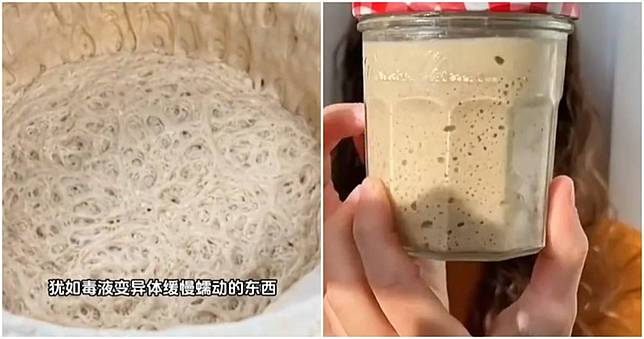Facing increasing social pressures, Chinese young adults are pioneering a fresh solution for companionship: static (静止的) pets. These zero-maintenance companions range from stones and toothpaste to the latest phenomenon — jars of activated yeast (酵母) called “face worms”. This trend has become very popular with Chinese youths trying to compensate for their stressful daily lives and careers.
The process is simple. Yeast colonies thrive in glass containers with only flour, water, and occasional sugar. Within hours of feeding, the mixture undergoes a fascinating change — bubbling while sending out a typical wine-like smell. Apparently, this is enough for young people looking for easy companionship. “No need to walk it, no mess, it’s worry-free and easy to look after!” one person wrote on a community board dedicated to pet yeast owners. “If you don’t want to keep it anymore, just add more flour and turn it into steamed buns to eat; there is no psychological burden,” another yeast “parent” commented.
Zhao Meng, director of the Department of Psychology at Wuhan Wudong Hospital, believes that young people’s enthusiasm for static pets comes from the accumulation of academic, work, and economic pressures. Compared with traditional pets that require a lot of time and money, static pets like pet yeast are low-cost and easy to care for. There is no need to take on responsibilities such as walking and bathing it, which is in line with the increasingly popular “lazy healing” lifestyle. Du Hemin, a psychotherapist at Wuhan Wudong Hospital, added that static pets provide owners with “secure attachment”. They are not going to get sick, and they don’t need constant attention.
These low-maintenance companions provide predictable comfort in unpredictable lives. As one person on the Internet said, “They deliver small but certain joy” — a contrast to traditional pets whose illnesses or misbehavior cause stress. While some might question the emotional depth of bonding with static pets, supporters argue these special pets fulfill a fundamental human need: the desire for companionship without burden, offering a real yet undemanding presence in lonely urban existences.
原创编写 版权所有 侵权必究! 每日更新 个性化阅读 英语飙升!
1.1. What are “face worms” in the text?
A Live insects.
B Yeast jars.
C Stone pets.
D Toothpaste models.
解析:选B。细节理解题。根据第一段的“jars of activated yeast called ‘face worms’”可知,“面蛊”指装有活性酵母的罐子。故选B。
2.2. What happens to the yeast mixture after feeding?
A It becomes big and solid.
B It changes color from white to yellow.
C It bubbles and smells like wine.
D It grows into many tiny insects.
解析:选C。细节理解题。根据第二段的“Within hours of feeding, the mixture undergoes a fascinating change — bubbling while emitting a typical wine-like smell.”可知,喂养后,酵母混合物会冒泡并散发出类似葡萄酒的气味。故选C。
3.3. Why do young people prefer static pets over traditional ones?
A Static pets involve high costs.
B Static pets bring heavy responsibility.
C Static pets offer more emotional comfort.
D Static pets need low maintenance.
解析:选D。细节理解题。由第三段的“low-cost and easy to care for”及“no need to take on responsibilities”可知,年轻人偏爱养静态宠物,“低维护成本”是主要原因。故选D。
4.4. What do supporters believe static pets satisfy?
A Companionship without burden.
B The need for constant excitement.
C A desire to care for fragile beings.
D High social status among peers.
解析:选A。推理判断题。文章结尾处提到,静态宠物支持者认为静态宠物满足无需负担的陪伴需求(the desire for companionship without burden)。故选A。
